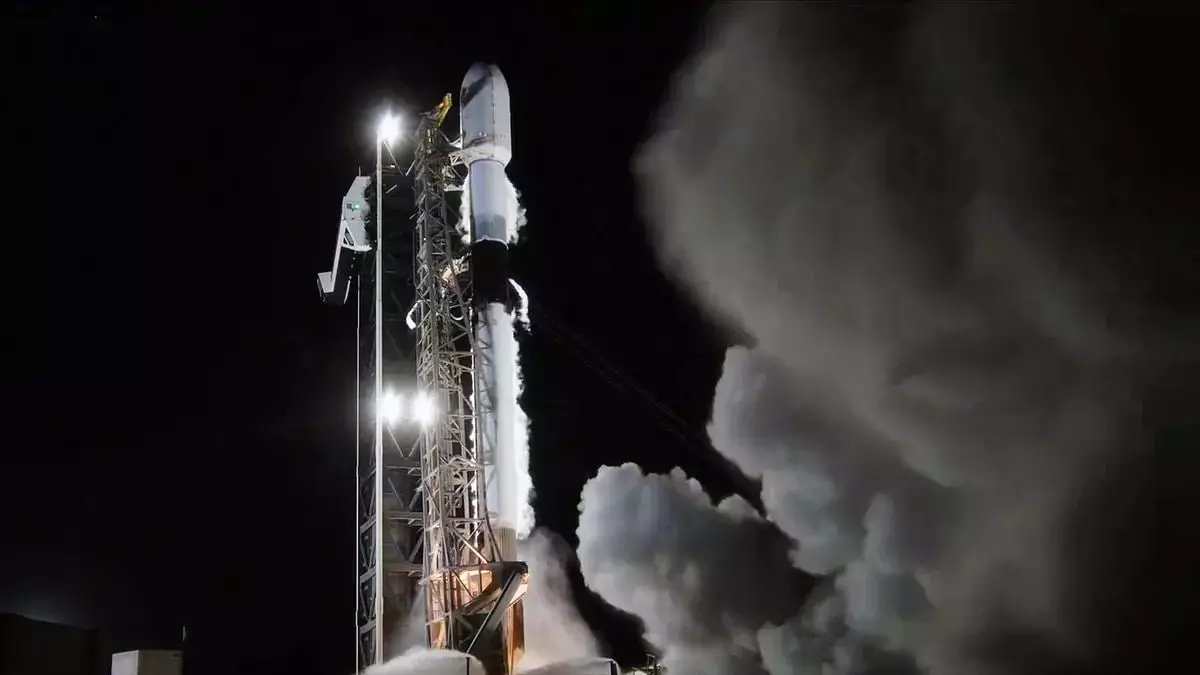The recent launch of SpaceX’s Bandwagon-3 marked a groundbreaking moment in the pantheon of European space exploration. As the Falcon 9 rocket ascended from Cape Canaveral, it carried with it more than just an array of diverse payloads; it transported the ambition of the European aerospace sector. Among these payloads was the Phoenix 1, a pioneering reentry capsule developed by Atmos Space Cargo, a German company. This is not merely another flight into the void; it represents an audacious attempt to assert Europe’s position in the realm of commercial spaceflight, showcasing innovation against the backdrop of intense global competition.
Disruptive Innovation in Space Logistics
Atmos Space Cargo’s commitment to revolutionizing space logistics is palpable in the design and goals of Phoenix 1. By seeking to return from orbit after just one revolution, the capsule is engineered with an inflatable heat shield—a component crucial for ensuring the safe return of high-value cargo. While the mission’s primary aim is to validate technologies that have been relegated to theoretical discussions until now, it extends far beyond just testing. It positions the European market as a viable contender in an arena dominated by established players, particularly the United States.
This drive toward innovation underlines a critical shift within Europe’s aerospace framework. The mission encapsulates a spirit of entrepreneurship rarely seen on the continent. By embarking on this pioneering venture, Atmos Space Cargo is asserting that Europe is not just an observer but an active participant in the future of space logistics and research. This is not just about transportation; it is about setting a stage for scientific advancement—from microgravity research to in-orbit manufacturing—that could catalyze progress across multiple sectors.
Emerging Trends in Collaborative Launches
The Bandwagon-3 mission exemplifies a broader trend towards collaborative launches, which are becoming the backbone of economically efficient space operations. With payloads like South Korea’s 425Sat-3 and Tomorrow-S7 riding alongside Phoenix 1, a new era of international cooperation in space has emerged, indicative of a world increasingly interlinked by technology and shared interests. SpaceX’s rideshare model proves that space exploration doesn’t have to be a zero-sum game; instead, it can foster a spirit of inclusiveness, allowing a variety of nations and companies to contribute to and benefit from the expanding frontier of low Earth orbit.
This collaborative spirit is not merely a practical necessity; it is also a philosophical shift. As we transition into an age where the access to space is democratized, the implications stretch beyond business into the realms of global partnerships aimed at collective human advancement.
Challenges and Future Prospects
Yet, the path is fraught with challenges. The success of Phoenix 1 could pave the way for next-gen developments, proving Europe can execute complex missions efficiently. Failures in space remain a haunting specter, and the stakes are incredibly high. A successful reentry not just validates a technological leap; it asserts European capability and credibility in a field where performance differentiates the winners from the left behind. The implications of this mission stretch into the future, promising a more profound capacity for scientific inquiry and commercial ventures in space.
As we look toward an uncertain future, the success of such monumental endeavors may ultimately define the trajectory of Europe in the global space race, signifying not just capability but also resilience and ambition. The world will be watching, and the echoes of this launch will resonate for years to come.


Leave a Reply